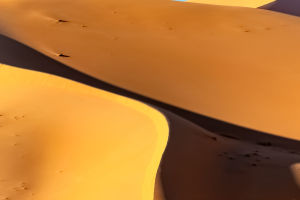The concept of a book has evolved dramatically over millennia, from clay tablets and papyrus scrolls to the bound volumes we recognize today.
The search for the oldest book in the world is not just a quest for the earliest written record, but a journey into the heart of human history, culture, and knowledge.
While defining the "oldest book" can be complex due to varying definitions and forms, several ancient texts stand out as remarkable milestones in the story of human literature.
Defining "Book"
Before delving into specific examples, it is crucial to define what constitutes a book. Traditionally, a book is a collection of written or printed sheets bound together along one edge and encased between protective covers. However, ancient texts often do not fit this modern definition. Early writings were inscribed on various materials, including stone, clay, metal, and papyrus, and came in many forms such as tablets, scrolls, and codices. For the purposes of identifying the oldest book, we consider any collection of written material that conveys a substantial narrative or body of knowledge.
The Epic of Gilgamesh: The First Great Work of Literature
One of the oldest known literary works is the "Epic of Gilgamesh," originating from ancient Mesopotamia around 2100 BCE. This epic poem, recorded on clay tablets in cuneiform script, tells the story of Gilgamesh, the semi-mythical king of Uruk, and his quest for immortality. The epic addresses universal themes such as friendship, the human condition, and the search for meaning, making it a cornerstone of ancient literature.
The tablets on which the "Epic of Gilgamesh" was inscribed are not bound together as a modern book would be, but they represent one of the earliest known attempts to compile a comprehensive narrative. The most complete version was found in the library of Ashurbanipal, the last great king of the Neo-Assyrian Empire, in Nineveh.
The Pyramid Texts: Pious and Funerary Writings
Another contender for the title of the oldest book is the "Pyramid Texts," a collection of ancient Egyptian pious texts dating back to around 2400–2300 BCE. These texts were inscribed on the walls of pyramids and tombs and were intended to protect and guide the pharaohs in the afterlife. Unlike the narrative form of the "Epic of Gilgamesh," the "Pyramid Texts" consist of spells, prayers, and incantations, serving a ritualistic purpose.
The "Pyramid Texts" are among the oldest pious writings in the world and provide invaluable insights into ancient Egyptian beliefs and practices. They eventually evolved into the "Coffin Texts" and later the "Book of the Dead," which were written on papyrus and placed in tombs to assist the deceased in the afterlife.
The Diamond Sutra: The Oldest Printed Book
When discussing the oldest book in the context of printed texts, the "Diamond Sutra" holds a significant place. Printed in 868 CE during the Tang Dynasty in China, it is considered the oldest surviving printed book in the world. The "Diamond Sutra" is a Buddhist scripture, translated from Sanskrit into Chinese, and it emphasizes the practice of non-attachment and the illusory nature of existence.
The book was discovered in the early 20th century in the Mogao Caves of Dunhuang, an ancient Buddhist site along the Silk Road. The "Diamond Sutra" is a prime example of early woodblock printing, a technique that revolutionized the dissemination of knowledge and laid the groundwork for the later development of the printing press in Europe.
The Ebers Papyrus: A Medical Treatise
Another ancient text of immense historical value is the "Ebers Papyrus," an Egyptian medical papyrus dating to around 1550 BCE. This extensive document contains a wealth of information on various medical practices, remedies, and diagnoses, offering a glimpse into the advanced medical knowledge of ancient Egypt.
The "Ebers Papyrus" is named after the German Egyptologist Georg Ebers, who acquired it in the 19th century. Unlike the narrative and pious texts mentioned earlier, this papyrus serves as an early example of a specialized scientific document, illustrating the diversity of ancient written works.
The quest to identify the oldest book in the world reveals the rich tapestry of human history and the enduring desire to record and transmit knowledge. From the epic tales of Gilgamesh to the pious incantations of the Pyramid Texts, and from the printed wisdom of the "Diamond Sutra" to the medical knowledge of the "Ebers Papyrus," these ancient texts are not just relics of the past but foundations upon which modern civilization stands. They remind us of our shared heritage and the timeless quest for understanding that continues to drive humanity forward.


